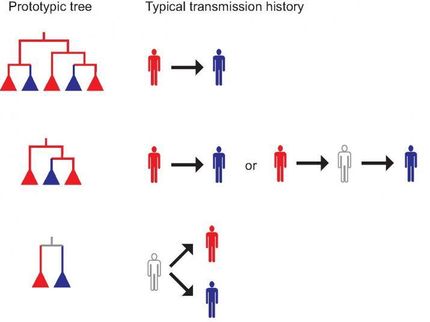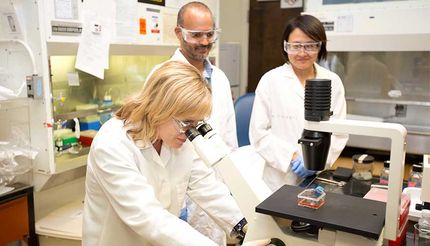Viral HIV vaccine gives durable protection against 'death star' strain
Toughest strains defeated through gene-therapy inspired approach
Among HIV researchers, one seemingly indestructible HIV-like strain has earned the nickname "death star." That's due to the strain's reputation for killing off hopes for potential vaccines and immunotherapies that could prevent the disease.
A team at the Scripps Research Florida campus reports successfully beating that challenge. In a paper published in Science Translational Medicine, lead authors Michael Farzan, PhD, and Mathew Gardner, PhD, describe their destruction of the "death star" strain and another especially hard-to-fight strain, suggesting it may be possible to protect uninfected individuals from multiple forms of HIV.
Their nontraditional vaccine achieved another critical goal: durability. This means it protected the research animals from infection long-term, with a single inoculation, Farzan says.
"We have solved two problems that have plagued HIV vaccine studies to date--namely, the absence of duration of response and the absence of breadth of response," Farzan says. "No other vaccine, antibody or biologic protects against the two viruses for which we have demonstrated robust protection."
Conventional vaccine approaches typically use a piece of virus or other immunogen to activate an immune system response. Because HIV replicates and changes so quickly, that approach has proven challenging. Farzan's approach uses a safe virus to fight the dangerous one, and relies on muscle cells rather than immune cells to generate protective agents. Here's how: A harmless, lab-made adeno-associated virus (AAV) carries within it a protective protein designed by Farzan and colleagues to stop HIV infectivity.
Called eCD4-Ig, the protective protein features two HIV co-receptors, CD4 and CCR5. The latter was discovered by Farzan and his team over a decade ago. Farzan's viral vaccine is injected into muscle. It "infects" the muscle cells, which causes them to produce the protective eCD4-Ig. During exposure to HIV, the HIV virus is attracted to eCD4-Ig. It binds, and then "undergoes conformational change prematurely, and it's no longer able to infect," Farzan says.
The tough-to-stop research strain is SIVmac239, dubbed the "death star" because it has proven nearly impossible to defend against. It's a type of simian immunodeficiency virus, which is an HIV-like virus that can infect primates. Primates are the only animals, other than humans, that support replication of these viruses. There's much more work to be done, notes first author Gardner. The study showed that the research animals could eventually become infected when exposed to atypically large loads of HIV. It also showed that HIV is capable of developing resistance to eCD4-Ig, albeit in a much-weakened state.
Encouragingly, the research animals did not develop serious immune reactions to the adeno-associated viral vector or the eCD4-Ig. Farzan said they had made concerted efforts to minimize that risk.
The use of AAV as a gene therapy tool has generated considerable excitement recently, gaining FDA approval for genetic diseases including inherited retinal disease and spinal muscular atrophy. This study shows it also has the potential save lives used as a protective vaccine, Farzan says.
"The results of our paper are encouraging for the potential of AAV as a platform for prevention of disease generally, and in concert with eCD4 as an agent for stopping HIV infection," Farzan says. "We hope ultimately to prove that our approach is safe for both infected and at-risk persons at a cost that makes it useable everywhere."




















































